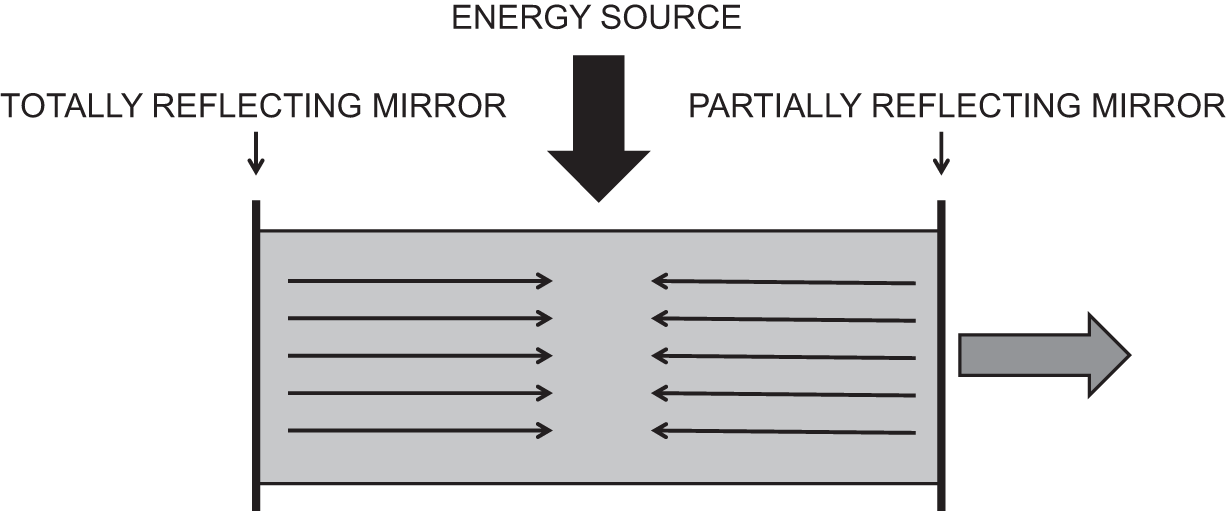The highest energy level is the most unstable state, and electrons quickly decay by releasing energy in the form of heat to a slightly lower energy level called the metastable state. The metastable state is more stable than the higher energy levels, so electrons remain in this state for a longer period of time. Continued pumping of the lasing medium results in population inversion, where more electrons exist in the metastable state compared to those in the ground state. This non-equilibrium condition created by population inversion is essential for laser creation.
As an electron decays from the metastable to ground state, it emits a photon of energy. If this photon strikes an excited electron in the metastable state, it incites it to emit another photon, which will have the same wavelength, waveform and direction as the incident photon. They are said to be in phase and coherent.
The lasing chamber contains a lasing medium and mirrors, which reflect photons back and forth between a totally reflecting and partially reflecting mirror. The beam of light is amplified in this manner and exits the chamber through the partially reflecting mirror as an intense parallel beam of coherent monochromatic light. 
Lasers cause heating of tissues which ultimately leads to destruction. Far-infrared and ultraviolet lasers are readily absorbed by water and therefore do not penetrate deep into tissues. Lasers in the visible spectrum are absorbed by haemoglobin and melatonin and penetrate further. Red and near-infrared lasers have the deepest penetration.
Carbon dioxide lasers emit infrared light at 10 600 nm wavelength. They have limited penetration, but these lasers are precise and can be used for cutting and vaporising.
Argon lasers predominantly produce blue–green light at 488 and 514 nm, but they also emit multiple other wavelengths. They are able to coagulate tissues, and are commonly used in ophthalmology.
Neodymium-doped yttrium aluminium garnet (Nd:YAG) emits at 1064 nm. These lasers have the deepest penetration and can cut and coagulate. They are used to resect gastrointestinal and bronchial tumours, and gynaecological lesions.
Applied science
Do you know of any classification system for lasers?
In the UK, the IEC (International Electrotechnical Commission) 60825 is adopted as the British standard for laser safety classification. This classifies lasers according to their maximum output power and wavelength. The table below summarises the classes of lasers.
| Class 1 | Safe under normal usage conditions |
| Class 1M | Safe under normal conditions except when passed through magnifying optics |
| Class 2 | Visible-light beam only (400–700 nm) |
| Limited to power up to 1 mW | |
| Safe under normal conditions due to protection by blink reflex | |
| Class 2M | As Class 2, but are not safe when viewing with optical instruments |
| Class 3R | Considered safe with careful handling and restricted viewing |
| Limited to power up to 5 mW | |
| Class 3B | Hazardous with direct exposure to eye |
| Protective eye wear required | |
| Power up to 0.5 W | |
| Class 4 | Extremely hazardous |
| Power over 0.5 W | |
| Hazardous with direct or scattered exposure to eyes or skin | |
| Capable of igniting flammable material |
Stay updated, free articles. Join our Telegram channel

Full access? Get Clinical Tree





